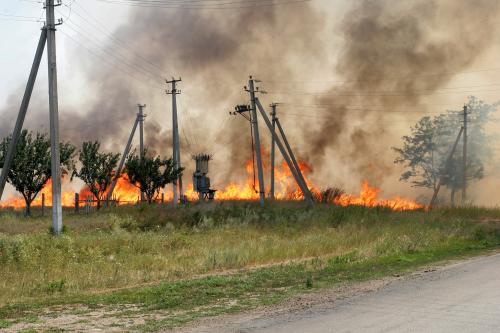The Mexican presidential campaign does not officially begin until February 8, but already the candidates are touring the nation and making public pronouncements.
The leading candidate for the PRI, former State of Mexico governor, Enrique Peña Nieto launched a trail balloon in October by telling the Financial Times of London that he would consider allowing private investments into Petróleos Mexicanos, popularly known as PEMEX.[1] His leading contender for the PRI prize, Senator Manlio Fabio Beltrones is less public in his willingness to consider opening the Mexican oil industry to private investors, but off the record, he has recognized PEMEX burgeoning debt and the opportunity to increase capitalization through private investment.[2] Both suggestions of opening PEMEX to private investment confront well established dogma that Mexican oil remains the domain of the Mexican people; a principle enshrined in Articles 27 and 28 of the Constitution.
Current polling demonstrates that the PRI outbids the governing conservative party, the PAN. PAN President, Felipe Calderon Hinojosa has frequently pronounced upon the necessity to allow private capital investment into PEMEX in order to expand exploration and exploitation. In 2008, he proposed significant reforms to allow subcontracting at fixed prices for most oil-related services. Despite, severe opposition from the leftist party, PRD under Andres Manuel Lopez Obrador, several of the reforms received legislative approval permitting PEMEX to contract with SINOPEC, Halliburton de México and other international companies. [3] In 2009, Calderón announced the construction of a new refinery to be completed by 2015, the first since 1970. Only the PRD has remained silent on the opening of PEMEX’s monopoly, conscious of its political base among the second largest union in Mexico, after the teachers union. Polling surveys indicate that the public are comfortable with national ownership of the petroleum resource, but a clear majority is not against the transfer of PEMEX to private ownership. As on several other issues, Mexican citizens demonstrate greater pragmatism than their political elites.
A national holiday recalls the day on which President Lázaro Cardenas nationalized the oil industry on March 18, 1938. After 21 years of wrangling with the Standard Oil of New Jersey and Royal Dutch Shell over royalties, the revolutionary and nationalistic mood in Mexico led to the expropriation of oil interests with the payment based on the value of current revenue. Exploration, oil rigs, refining and pipelines to urban users remained the property of the state. The PEMEX oil workers only union has remained the guardian ever since. Union bosses still wield excessive control over both hiring and certain management issues within the company. Corruption is rampant. Currently, PEMEX has a debt of $56 billion.[4] The reforms of 2008 have resulted in sub-contracts for technology and technical expertise, but all such contracts were preceded by intense debate with the union. PEMEX was to remain a national treasure.
At its peak in 2003, the nation’s treasure produced 2.2 billion barrels per day (BP/d). Cantarell, discovered in 1976 by a fisherman, Rudesindo Cantarell, is the second largest oil reservoir in the world, comprising four oil fields in the Gulf of Mexico. For a number of years, nitrogen injection kept oil levels up, but current production has fallen to 440,000 million BP/d.[5] International geologists have determined that Cantarell’s best days are over and that lower revenues must be expected in the future.
Income from PEMEX provides one third of federal revenues and enables the distribution of social services, as well as government salaries without the need to raise taxes. Within Mexico, there exists a reliance on PEMEX for necessary federal expenditures. This dependency also encourages the avoidance of tax payments and the growth within the economy of the informal sector which pays minimum, if any taxation. Also, subsidized gas prices, distributed through PEMEX stations, have kept inflation low.
The decline in Cantarell’s production has coincided with a rise in Mexico’s middle class and increased use of automobiles and industrial products. Electricity is both sold to the U.S.A. and bought from Texan electrical generating companies. Slowly, the recognition that PEMEX could not produce enough energy to sustain the needs of a growing Mexican state has grown. When President Calderón proposed energy reforms in 2008, he was met with howls of protest. Three years later, skepticism – not protest – on how to accomplish the reform met Enrique Peña’s proposal.
The catalyst for change came from Inácio Lula da Silva who addressed a Mexican business summit on October 25, 2011. In the brusque, but charming manner that characterizes the charismatic former Brazilian president, he declared for the third time in recent months that PEMEX and PETROBRAS should become partners and together create an energy company to explore new markets. [6] Instead of a joint venture, both state owned companies should create a third company which could accept private investment for further energy exploitation. If the dream company, “Petróleos Mexicanos y Brasileiros S.A.” was to drill in areas outside Mexican sovereign territory, no change to the Constitution would be needed. It might start by drilling off the West African coast, where PETROBRAS cut its teeth in 2001 with other national and multinational oil companies. [7] Overtime, PETROBRAS acquired the managerial and technical expertise in pre-salt deep waters to operate with greater efficiency and profitability. It also attracted significant foreign investment, similar to the U.S. $224 billion which PETROBRAS expects to receive in the next three years.[8] The potential for a “Petróleos Mexicanos y Brasileiros S.A.” also presents opportunities for international sovereign wealth investments. Lula’s repeated message to Mexicans was to move away from reliance on the U.S market and expand business opportunities and markets in South America.
Lula offered his Mexican hosts a Brazilian partnership in a critical industry that has been frozen in nationalistic rhetoric and a monopolistic trade union. A leader from a newly industrialized BRIC nation, not a traditional northern Atlantic leader, has proposed a solution. Lula’s impact is to partially de-politicize the opening of Mexico’s oil industry.
Significant challenges exist to opening Mexican energy to private investors. Only the party of Lázaro Cardenas, the PRI, can break the nationalistic taboo and privatize PEMEX. The forthcoming presidential campaign and the willingness of the PRI wanna-be candidate to discuss this subject gives hope that after 73 years, Mexican citizens might get a chance to modernize their energy source. Only then, could Mexico regain its status as an energy giant.
[1] “Diferentes mecanismos podrían ser explorador para asegurar el involucramiento del sector privado en su alianza con Pemex… Brasil es un ejemplo”, dijo Peña Nieto. Translation of Financial Times interview, October 18, 2011
[2] Conversations with members of COMEXI, Queretaro, Mexico, October 23, 2011.
[3] SINOPEC is the Chinese Petroleum & Chemical Corporation.
[4] Interview with Chief Financial Officer, Carlos Trevino, Business Week, December 15, 2010. www.businessweek.com/news/2010-12-15/pemex
[5] Barclays Capital Research, October 2011. www.commodityonline/futures-trading.com
[6] “Quiero que las dos [Petrobras y Pemex] se asocien y que se cree una tercera empresa para explotar nuevos mercados.” El Universal, Sección B, 26 de octubre, 2011.
[7] PETROBRAS is also a state-owned hydrocarbons company with a powerful union and supported by nationalistic governments. For the first 15 years of its existence it remained a loss-making enterprise and Brazil imported oil. Thanks to the reforms under taken both by Fernando Cardoso and Ignacio Lula de Silva, PETROBRAS is now an international company with private investors. It is poised to become a net exporter of hydrocarbons.
[8] Luiz Ignacio Lula de Silva, Cumbre de Negocios, Querétaro, México, October 25, 2011.




